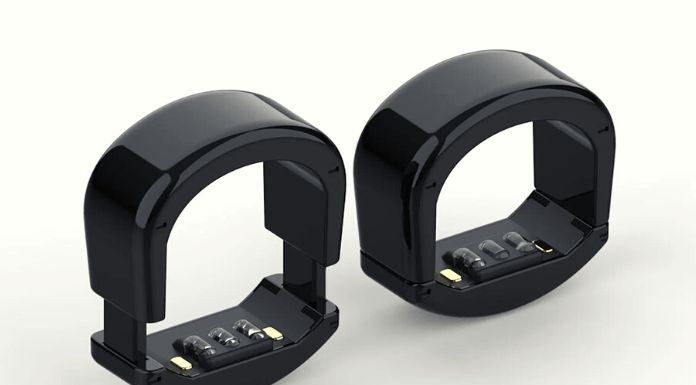The smart Ring can simplify the control of a wide range of functions and become the preferred control tool for the consumer market, home automation, and even for payments via smartphone. After glasses, helmets, headphones, and watches, even the rings become smart and allow you to perform various functions.
All In One Finger
Logbar has called Ring its Ring that allows gesture recognition to remotely select commands on the displays, write texts on them by moving your finger in the air, activate payment functions that provide codes or passwords, and switch on or off parts of safety without the need to divert attention from what you are doing and, finally, to receive appropriate alarm signals from devices previously programmed to do so. In practice, over a thousand gestures can be recognized and converted into commands uniquely related to the worn Ring. Currently, many companies are already developing applications of all kinds to equip the Ring with a wide variety of main consumer uses, but also for home automation and automotive infotainment.
Yoshida’s Ring incorporates Bluetooth technology in a chip of a few square millimeters along with three LEDs, a vibration sensor, a motion sensor, a contact sensor, and a rechargeable battery thanks. This allows you to control various devices by simply pointing your finger and moving it in the air, almost the same as when using a touch screen but without contact. For it to work, appropriate gesture recognition software must be inserted in smartphones, tablets, televisions, displays on car dashboards, or in the control displays of household appliances, and an adequate, albeit very simple, programming that allows the software to identify movements and activate the functions they are intended for.
It is likely that a driving application could be messaging on social networks, which is simplified much with the Ring from mobile phones and PCs. Still, domestic applications for controlling the numerous electronic devices in the home should not be underestimated. Furthermore, since the software uniquely recognizes the ring bearer, it is also possible to use it for payments as long as there is the support of a smartphone duly equipped for this purpose, i.e., fitted with a secure and real-time connection with your bank of reference.
Applications of this type have already been tested, and not only do they seem to work well, but they are also risk-free, which is why they could establish themselves as a secure payment method due to the advantages they offer in terms of technological simplicity, speed of execution and low cost compared to to the recognition of fingerprints or other devices that still struggle to conquer the market due to their relative complexity. Furthermore, thanks to the on-board sensors, the Ring can receive signals and, for example, emit a vibration to notify the arrival of a message on the phone, to confirm that a bank transaction has been successful, or to remind a professional to turn off a particular appliance at the end of a lengthy procedure.
An Infinite Number Of Applications
The idea for the Ring came to Yoshida in 2009. Still, it took two years of research and development in the San Carlos, California laboratory to make the first working prototypes, although initially a bit bulky. The turning point occurred in 2012 when Yoshida managed, by trying and retrying numerous configurations, to select the on-board functions by choosing them carefully, minimizing consumption while simultaneously maximizing performance and the richness of operational processes. Gesture recognition is available for programmers in three versions: Open URL, Browser, and SDK.
It allows you to implement any operational functionality using the API, the Javascript language, or the SDK development kits typical of Android and iPhone. Of course, an inevitable Ring Store has been prepared where you can download all the Apps for the Ring. Today the Ring can therefore be activated and used with the iOS7 support of iPhone / iPad / iPod Touch, Android (from version 4.4 onwards), Windows Phone, and the innovative Ring Hub. The latter allows the Ring to interact with non-Bluetooth applications through infrared and radiofrequency signals and therefore interface with the infinite range of domestic, automotive, and professional applications that can be reached wirelessly.
In fact, in the infrared, we find all home remote controls and automotive infotainment devices, while in Wi-Fi, it is possible to control PCs, printers, video games, surveillance devices, and even machine tools, even if in all these cases, the consumption of energy rises slightly. The rechargeable battery is guaranteed for a thousand use/recharge cycles that are carried out with the appropriate Battery Stand charger or with the Micro USB cable both supplied, but some attempts are already being developed to associate the Ring with an energy harvesting technology that can be used to recharge the battery with hand movements and extend its life even longer.
The Logbar Ring allows you to select commands on the displays, write on them or activate payment functions simply by moving your finger. Still, it can also receive alerts from your smartphone by vibrating them. The Ring is programmed with APIs, JavaScript, and SDKs and, in addition to iPhone, Android, and Windows Phones, interfaces through the Ring Hub with infrared remote controls and with devices in the Wi-Fi network. Long development work has allowed us to perfect the gesture recognition technique and make it customizable to control an infinite number of applications. The Ring integrates Bluetooth, three sensors, three LEDs, and a rechargeable battery in a stylish silver casing.
Also Read: AMAZON’S NEW INTERNET SATELLITES ARE READY FOR LAUNCH


